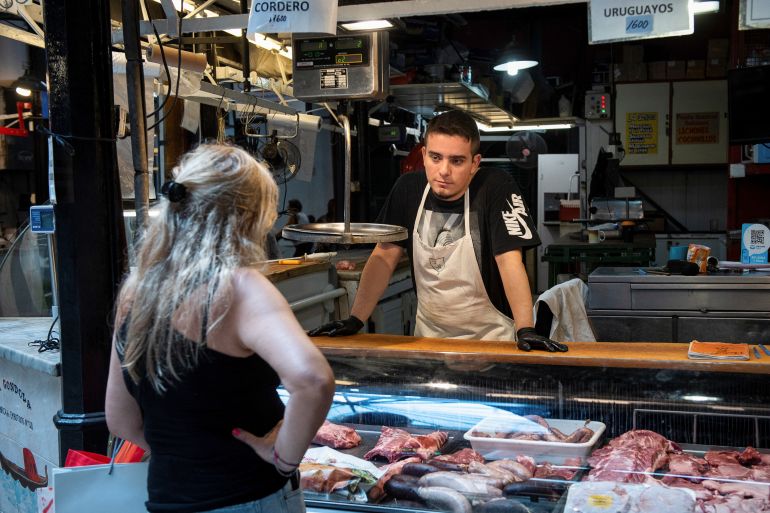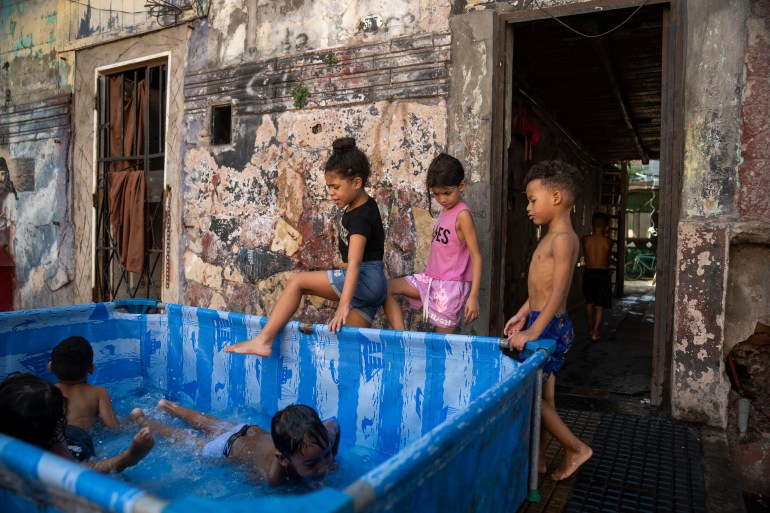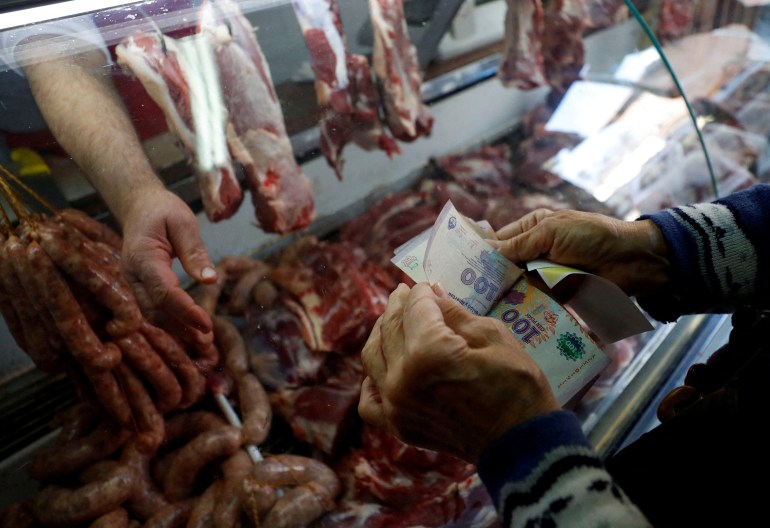Inflation in Argentina surges past 100 percent in historic spike
The country’s inflation has not surpassed 100 percent in over three decades, as value of Argentina’s currency plummets.

Inflation in the South American country of Argentina has risen past 100 percent for the first time since 1991, according to the government’s latest consumer price index.
The National Institute of Statistics and Census (INDEC) released its February report on Tuesday, pinpointing Argentina’s annual inflation at 102.5 percent as the country continues to suffer from one of its worst economic crises in decades.
Keep reading
list of 3 itemsArgentina identifies another child kidnapped during dictatorship
Argentina president seeks impeachment of Supreme Court chief
In February alone, inflation rose 6.6 percent, with food and beverages identified as the category of items most affected. INDEC credited the 9.8-percent increase in food costs to steep prices for meat, dairy and egg products.
The latest inflationary jump arrives as Argentina contends with a historic drought, its worst in nearly 60 years, and wildfires in areas like the northern Corrientes province.

The country is a leading exporter of soybeans, alongside the United States and Brazil, as well as other agricultural products like corn, wheat and other grains.
But with crops failing in Argentina’s fertile grasslands, known as the Pampas, industry experts have slashed the country’s expected agricultural yields to levels not seen since the turn of the century. High temperatures, believed to be sparked by climate change, have beleaguered the country since May 2022.
Argentina has the second largest economy in South America. But for much of the last century, its market has been notoriously volatile, with a debt crisis in the 1980s spurring chronic hyperinflation throughout that decade.
The inflation crisis hit a peak in 1989 with rates reaching more than 3,000 percent at certain points.

Struggling with its spiralling international debt, Argentina arranged a controversial deal in 2018 with the International Monetary Fund (IMF) for more than $57bn in credit — the largest loan package in the fund’s history.
But inflation has crept higher since 2018, and the country has struggled to keep pace with its repayment plan. A new $44bn loan deal was reached with the IMF in 2022, to replace the 2018 plan.
On Monday, the IMF announced it had reached a “staff-level agreement” to ease the country’s economic targets under the new debt plan, citing “the challenges of an increasingly severe drought”.
Speaking to the Reuters news agency, shoppers on the outskirts of the capital Buenos Aires expressed frustration with Argentina’s economic struggles and the toll it was taking on their cost of living.
“There’s just nothing left. There’s no money. People don’t have anything, so how do they buy?” said Irene Devita, 74-year-old retiree shopping for groceries.
She told Reuters that she had been recently forced to forego a planned purchase of tomatoes as food costs outstripped her ability to pay.
Another shopper, 50-year-old Patricia Quiroga, expressed frustration at politicians’ seeming inability to curtail the inflation.
“I am tired, tired, just tired of all this, of the politicians who fight while the people die of hunger,” she told Reuters. “This can’t go on any more.”
Argentina is set to hold general elections, including for president, this October.